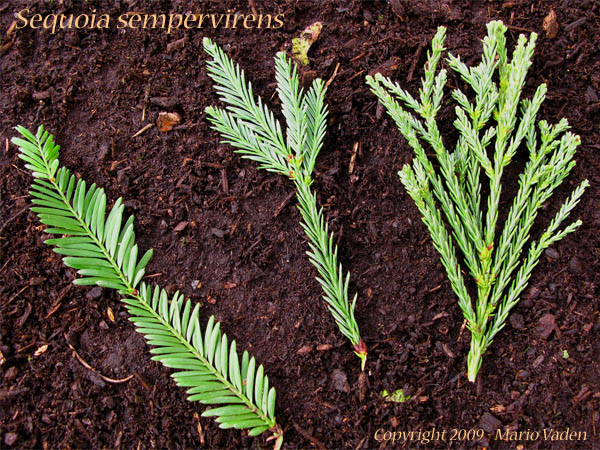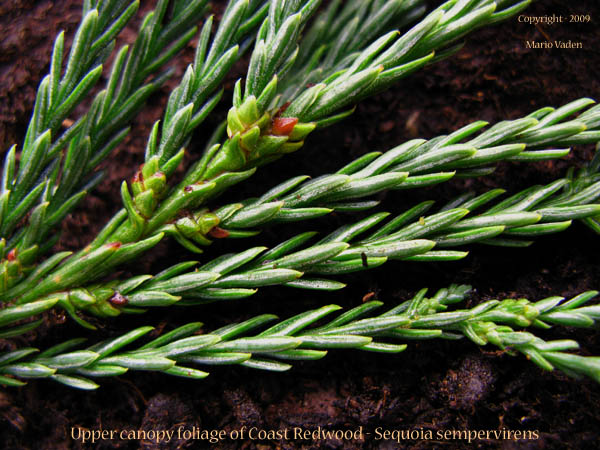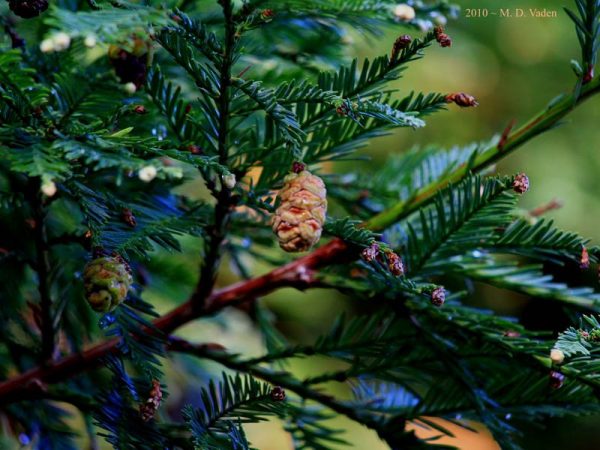For anyone following on Facebook … Redwood National and State Parks posted videos August 7th & 9th with several rangers sharing about coast redwoods. All 3 videos made some claims about growth and foliage that sound incorrect. It’s worth the time to provide a few minutes of clarification.
The August 7th video claimed that redwood “reiterations” ( extra trunks sprouting from the crown) “root” into water reservoirs in broken decayed tops. Not exactly. Any part of that redwood near the moisture pockets may grow small roots into cavities of water or wet decay. Reiterations can emerge from branches, but also from the main trunk, and remain connected to it. Reiterations draw water up from the main root system and manufacture food by their leaves’ photosynthesis. That food taken down the tree to feed the entire organism. It often happens that reiterations begin near breakage that later decayed and retains rain water. But more often, main trunks meet the area of decay and water because the cavities or wet decay is commonly within the middle of those trunk’s top.
The August 9th video (near minute 17:30) referred to lower coast redwood foliage as “shade foliage” and the upper needles as “sun foliage. The ranger expressed that “shade foliage” was better adapted to photosynthesis in the shade, and the upper small scale-like foliage is better adapted to extremes, sun and warmer temperature. The August 7th video also stated this near minute 7:45
Actually, the upper foliage in very tall coast redwoods becomes smaller and scale-like on account of the great height it’s trying to draw water up to. Scale-like foliage is not required to contend with sun. One example that helps understand are groves of young shorter redwoods that only have normal flat needles top to bottom. Their tops are equally exposed to the same sunlight but they grow like “rockets” in the early years. Another example are redwoods in warm climates like I showed on my redwoods and fog page ,,, only 19 inches of yearly rainfall, 100 degree weather, cool winters, but just regular flat needles suffice. Also, if top foliage was really needed to contend with sun, the foliage on the sides at any height exposed to sun would also need to be scale-like. But this is not the case. The needle variance is related to how high up up it grows, not exposure to the sun. Otherwise the southwest side of the tree would have scale-like foliage top to bottom and the north side would have flat foliage top to bottom.
So it’s more accurate to speak of “lower foliage” … “middle foliage” … “upper foliage”. The taller the old coast redwoods grow, the smaller the foliage may become. I added images below showing foliage from the bottom, middle and top of coast redwoods in a grove reaching close to 300 ft. high. Plus an image of upper foliage and an image of lower foliage with cone.
Finally, one August 9th video claimed that coast redwood branches are made to snap off easily if other branches or trunks hit them. From what I’ve observed among urban and old growth forest redwoods, I don’t find solid evidence to support this. It may seem that way from a limited perspective. Many of the old redwoods have been battered and lost many solid branches over the years. Often, those are replaced with weaker epicormic sprouts that can break off more easily. Otherwise, some coast redwoods retain branches up to three, four or even seven feet thick. And those could be guaranteed as exceptionally strong.
One more thing worth expounding is Lobaria pulmonaria or “lung lichen“. Ranger Steven mentioned it in the Aug. 7th video. Viewers may get the impression that forests ranging from sapling to 200 ft. can’t grow lung lichen. It’s true that older taller forests can develop lung lichen much more abundant. That’s basically true of coast redwood forest and other like Douglas fir. But it’s not impossible for lung lichen to grow much lower down. I’ve seen it on some species including deciduous trees, growing as low as 8 ft. from the ground, like a spot I recall near the Umpqua River. Similarly, Methuselah’s Beard lichen often takes-hold far overhead in older forests. But if you pass through Avenue of the Giants, stop by the Bear Creek bridge and look straight across … eye level – at a Bigleaf Maple laden with Methuselah’s Beard. But it’s true, given centuries, some of these lichens can multiply far above our heads.
The parks and rangers post a lot of good information, and we thank them for that. But sometimes if the ducks don’t line up in a row, it’s best to correct the dialogue. Thank you for reading.




Recent Comments